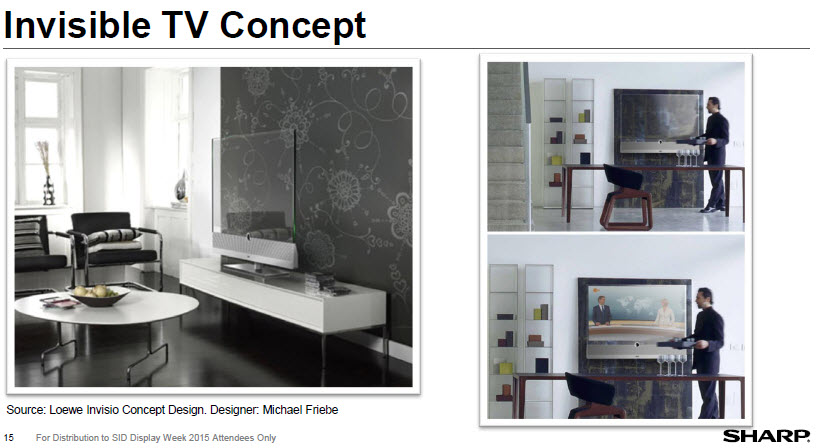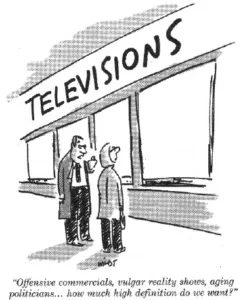Apparently the answer is “a lot”Jim Sanduski is President of Sharp Electronics in the US and he talked about the issues of profitability for the industry. He said that high resolution is a big driver of the market – even reality shows are wanted in HD – consumers like to see more detail.
It has been a good time for UltraHD TV in the US and by Q1 2015, accounts for 36% of revenue in the US TV market. In sets above $1,000 it’s over 60%.
In Q1 2014, the share of 55″ sets that cost more than $2,000 went from 84% to 4% of the market, while 65″ 4K at $3,000 dropped from 99% in 2014 to 12% in 2015.
However, there are more factors at play, here. Of course, the ASPs of UltraHD sets are higher, so panel and set makers have been pushing this technology. Retailers also make better margins, so they have really devoted a lot of space and attention to promoting UltraHD. Further, set makers are happy to provide more marketing support.
Resolution is an easy thing to understand and consumers can see the difference. The TV is a “big ticket” purchase, so consumers want the product to be “future proof”. Finally, Netflix has helped by providing 4K content.
What’s next, asked Sanduski? He said that Sharp has seven ideas.
First Sharp showed at CES a “4K Next” set that uses Quattron sub-pixel rendering to show a 4k image that looks like 8k. Sharp expects strong appeal for this kind of technology over the period before “true 8k”.
Sharp is now in its third generation of 8k sets and now has an 85″ set with 120Hz and 12 bits per pixel of grey scale. It also maps to the Rec 2020 colour space (although, presumably, not 100% of the gamut).
Frameless design is popular and Sharp is trying to create a bezel-less display.
Free Form displays are important for consumer product designers. LCDs don’t have to be rectangular any more. (We have a video online on this topic.)
Wrap around displays (as shown at CES) that are convex for PID applications could be significant in the future.
Transparent displays are also interesting. The LCD can be made transparent (although transparency is less than for OLEDs – Man. Ed.)
Sharp is developing an “invisible TV” concept based on a completely transparent set when the power is off. Sanduski referenced the “WAF” concept that TVs are furniture so the whole family decides on purchases. He said that this allows a husband to get a set as big as they want, without their wife objecting.
 The Invisible TV Concept was developed with Loewe
The Invisible TV Concept was developed with Loewe
Sanduski asked for standards to cover the terms “Wide Colour Gamut” and high dynamic range (HDR) which will be used in the market over the next year or two and he said that the UltraHD Alliance is looking at this.
He also said that although some feel that optical media is dead, it still offers the best in class display performance. Blu-ray can go up to 75Mbits, five times better than the 15 Mbits of Netflix.
The set industry also needs as much UltraHD content as possible to drive sales and so he made a plea for content makers to espouse the format.

